Daily life and leisure
In recent decades, scholars have developed new areas of research in the field of “material culture.”Simultaneously, the public interest in the “heritage” of the past has grown.
This has encouraged the restoration of period houses to their original state as museums of daily life, for instance:
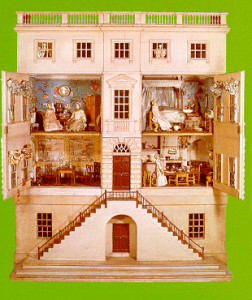
- A doll’s house
- A doll’s house, c.1740 Courtesy of the Museum of London.
It reflects the arrangement of a Georgian home
[click on the picture to enlarge it]
Others have been “The Georgian Merchant’s House” in Bristol, “The Treasurer’s House” and “Fairfax House” in York, “Pickford’s House” in Derby, the Georgian Rooms of “the Tudor House” in Southampton. Also see the period rooms of the Museum of the Home (Geffrye Museum) in London.
In the United States, the eighteenth-century town of Williamsburg (Virginia) is peopled by actors in period costume practising trades of the time.
Williamsburg (Virginia)
Historical reconstructions of 18th century scenes at Williamsburg (Virginia)
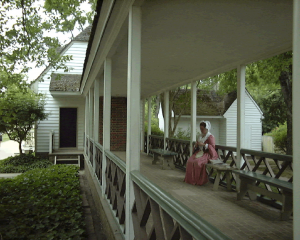
- Embroidery
- Photos LGB
[click on the picture to enlarge it]
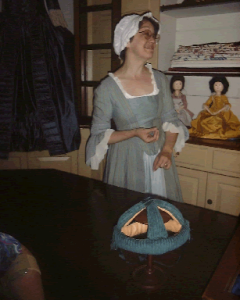
- A baby’s cap
- A baby’s cap, lined so as to protect the baby’s head
Photos LGB
[click on the picture to enlarge it]
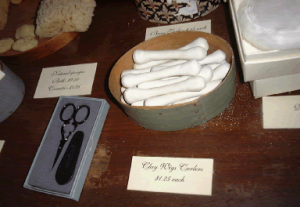
- Wig curlers
- Wig curlers, also to be seen at Bath
Photos LGB
[click on the picture to enlarge it]
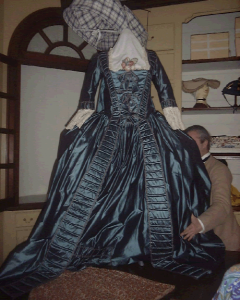
- A blue dress
- Photos LGB
[click on the picture to enlarge it]
Other rooms depict kitchen scenes
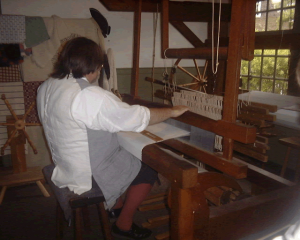
- A weaver
- Photos LGB
[click on the picture to enlarge it]
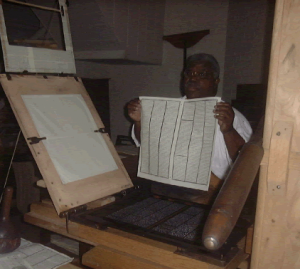
- A printer
- Photos LGB
[click on the picture to enlarge it]
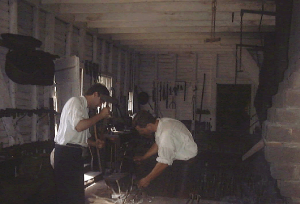
- Blacksmiths
- Blacksmiths in an 18th century setting at Williamsburg (Virginia)
Photos LGB
[click on the picture to enlarge it]
Currency
£sd
Before the decimalisation of the 1970s, an English pound was divided into 20 shillings, each in turn divided into 12 pence:
- £1=20s
- 1s=12d
As a crown coin was worth 5 shillings, half-a-crown was 2 shillings and 6 pence, i.e. 1/8 of a pound.
Furthermore, a guinea represented 21 shillings, i.e. £1.1.0.
There is evidence, from the figures drawn up by Gregory King in 1688, Joseph Massie in 1759, and Patrick Colquhoun in 1801, that on average a labourer’s wage was £15 a year, or a shilling a day.



